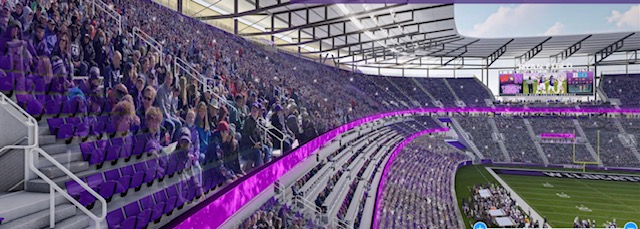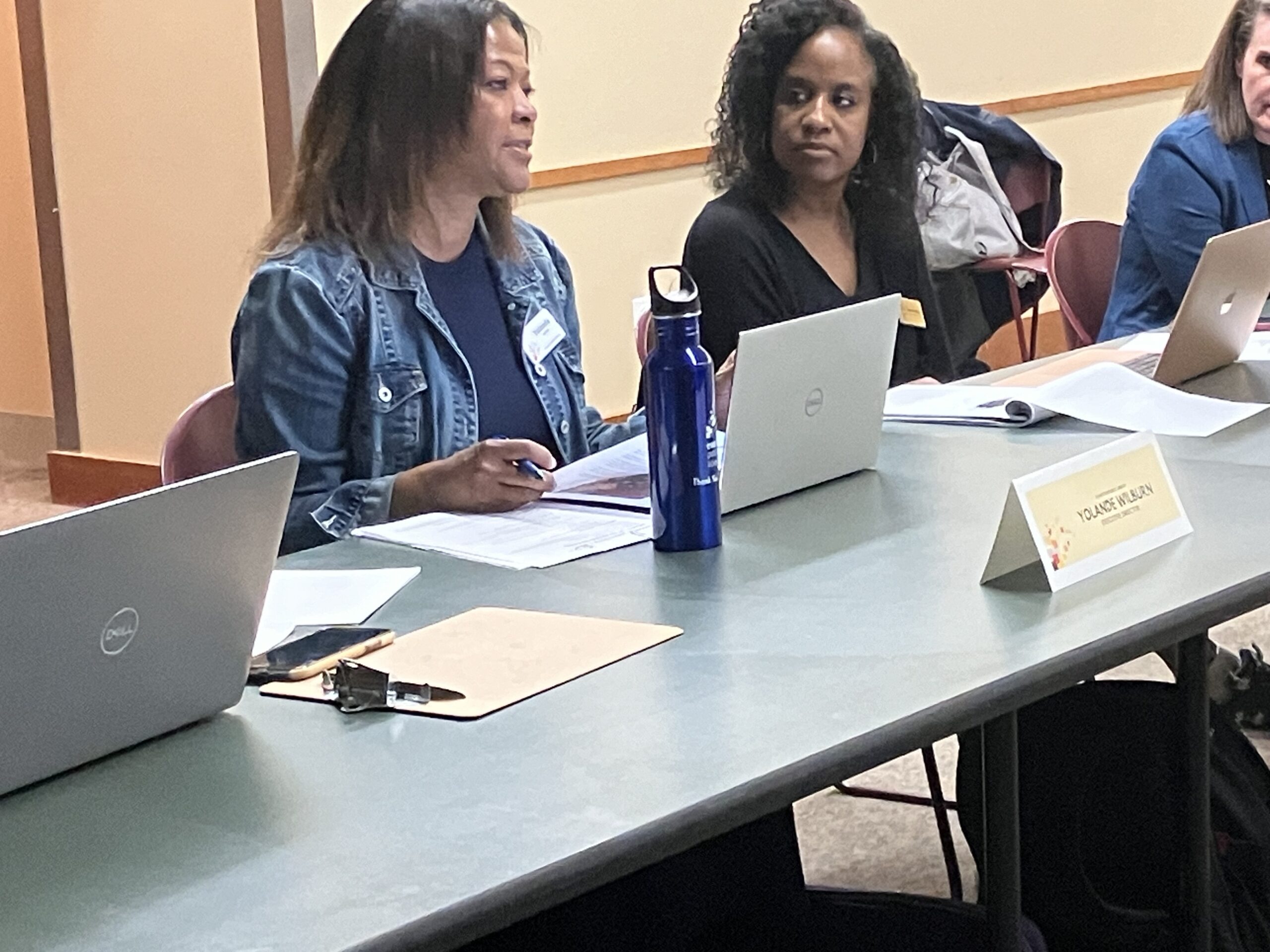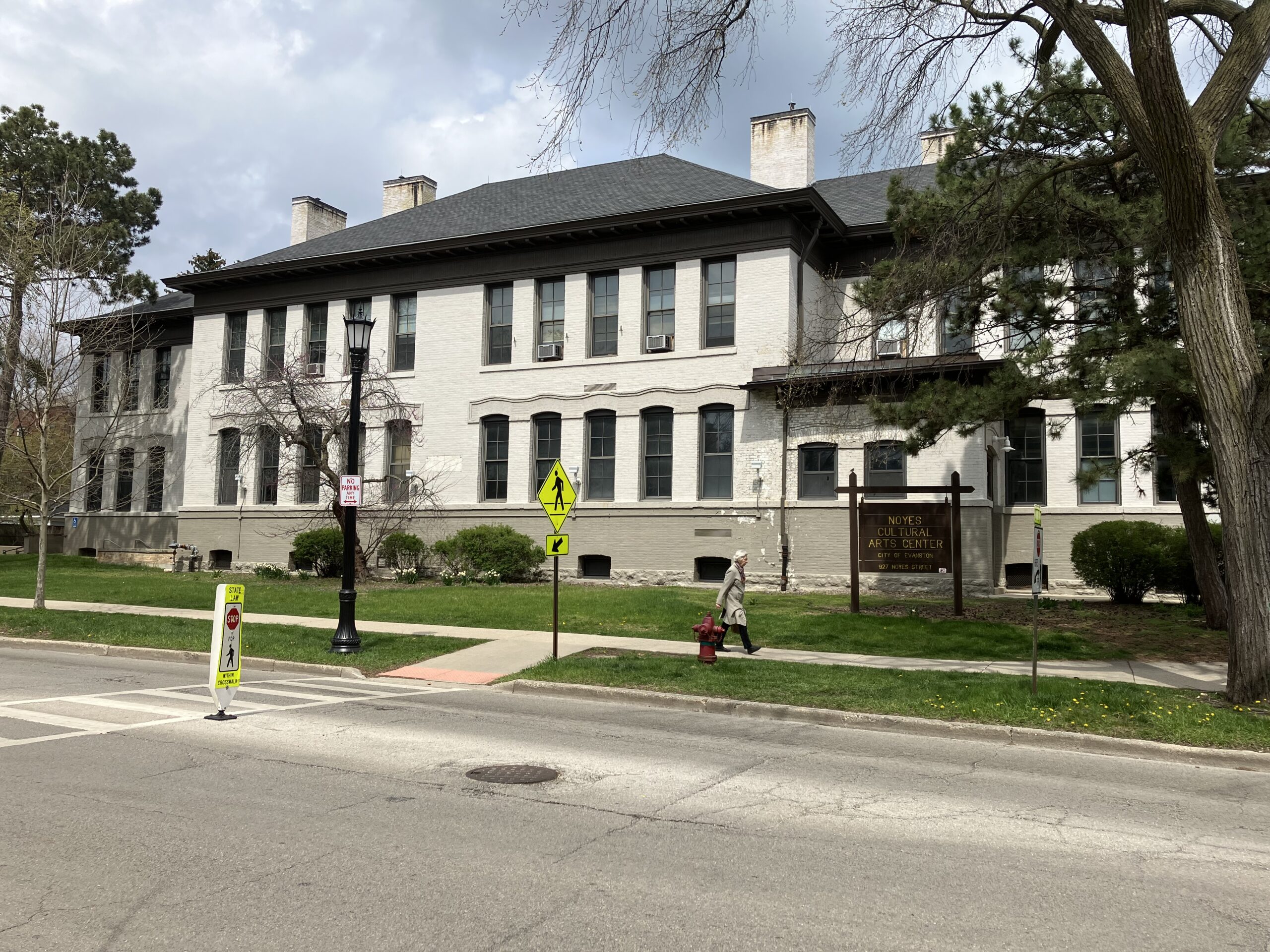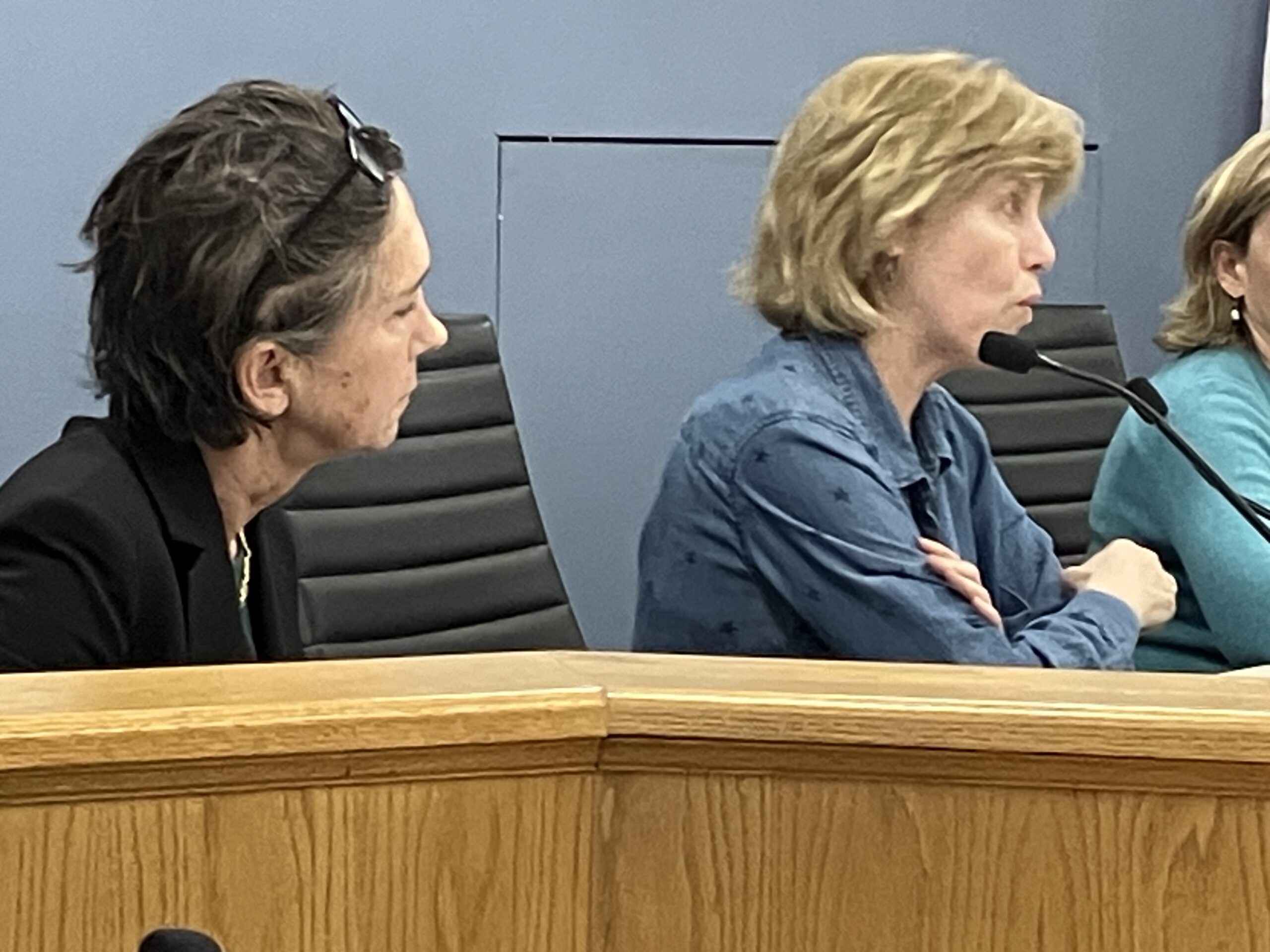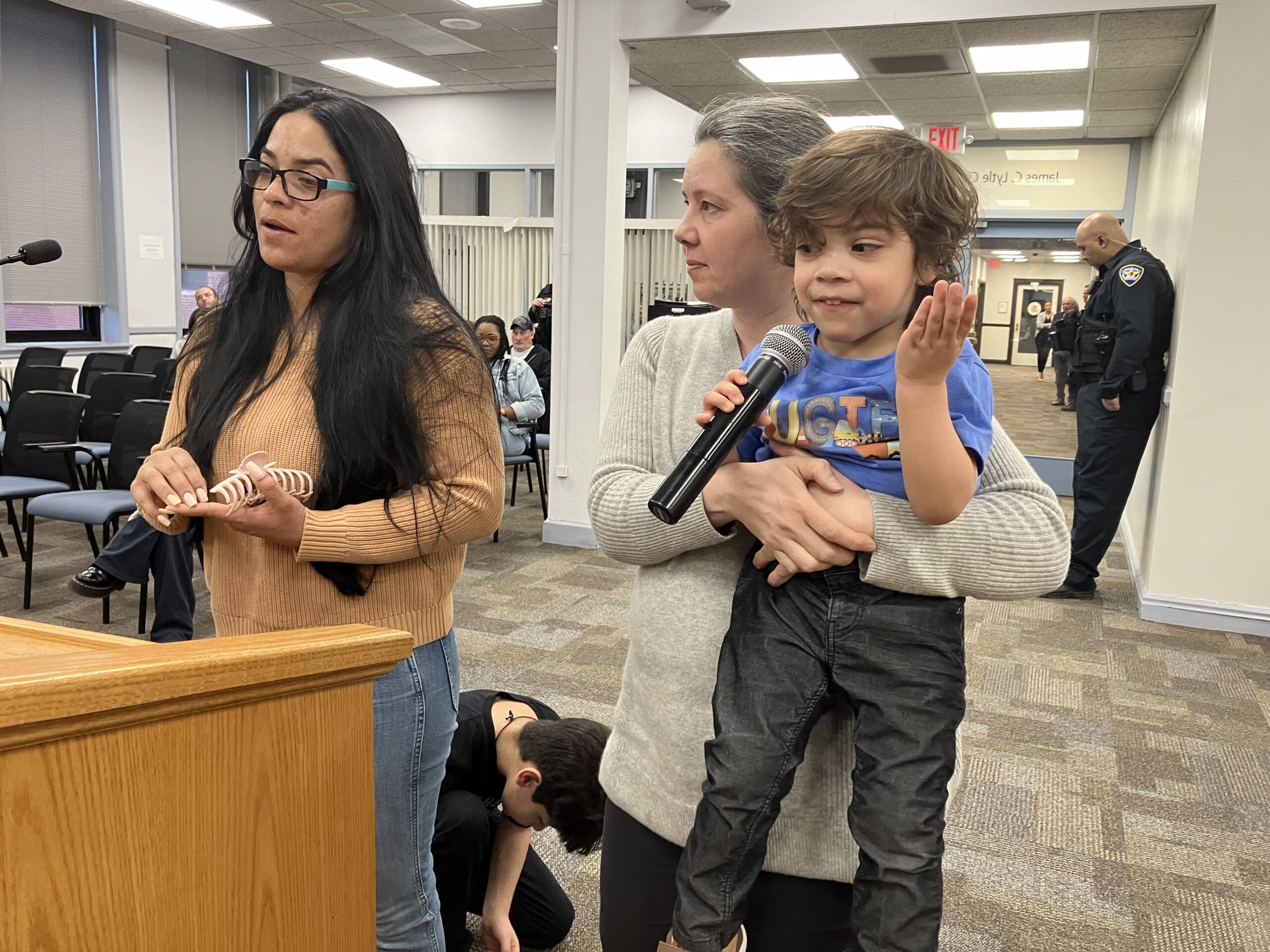By Bob Seidenberg
Evanston City Council members have typically voted on the side of residents when large projects would have a discernible impact on neighborhoods, but that record is about to be seriously tested tonight.
Council members were scheduled to vote Monday on Northwestern University’s request for a planned development for a new Ryan Field at 1501 Central St. in the U2 University Athletic Facilities District.
The item was tabled, however, and pushed ahead a week.
The Council is also scheduled to vote on accompanying legislation — a resolution authorizing the City Manager to sign a Memorandum of Understanding that includes a public benefits package along with the university’s proposal to show six full capacity concerts at the stadium once it is rebuilt.
NU officials call the development “a once in a generation” opportunity.
Residents in the Central Street area, whose neighborhoods cluster around, call the expanding — which includes up to 60 other events — an invitation to turn the area in “Wrigleyville.”
“Six concerts at the new Ryan Field,” wrote Steven J. Harper, in an essay that ran in today’s Evanston RoundTable. “It’s not just deflection that hides the real number — 66,” he said, adding in the six ful- capacity concerts. “It’s a Trojan Horse and distraction from what is really happening: Northwestern seeks to create a massive, summer-long performance entertainment venue.”
NU officials have maintained the concerts are necessary to support the new stadium which received its original impetus from a $480 million, the largest in school history, from Patrick and Shirley Ryan in September 2021.
The Ryans’ gift was to go to accelerate breakthroughs in biomedical, economics, and business research and enable the University to redevelop Ryan Field and construct a best-in-class venue.
Events done in a ‘programmed way’ NU
NU officials request to hold as essential to the financing of the project came later.
“Zero taxpayer dollars are needed to build and maintain the new Ryan Field and plazas,” the university said in an early Q&A on its website, rebuildryanfield.com
“Since a facility like this cannot be financially viable on just seven football games, the University is considering hosting a limited number of concerts each other.”
At the Oct. 30 City Council meeting, where the proposal had its first hearing, Luke Figora, Northwestern’s Vice President and Chief Operating Officer, told Council members that “the numbers get kind of tossed around in terms of 7,500 people [capacity at the smaller events], 60 days a year,” he said. “What we’re really trying to do with the text amendment, the ‘ask’ there, is create the platform to do this kind of stuff in a programmed way that makes sense for the broader community.
“Most of the focus is about the concerts,” he said. “And just as a reminder, right now we do generally between six to eight capacity events at Northwestern Ryan Field every year. It’s usually six to seven football games, and then one graduation. That’s kind of when we’re looking at big capacity events at Ryan Field. So something like 2% of the year that we’re using that facility in the way it could be used.
“When we’re talking about concerts, we’re asking about adding six days to that,” he noted. “So a total capacity event calendar for the year of something like 13 days.”
He pointed to a concert management plan that the University has attached to the MOU that includes guidelines how the concerts will be managed to address concerns.
University officials will review them every year with the city to keep them updated over time,” he said, “as long as we’re doing these events in the city.”
Most of the other NU officials statements on the proposal had to do with how the changes would elevate the school’s athletic program, and the value of the benefits which “we expect to be an economic boon to the city of Evanston,” said Dave Davis, the school’s Executive Director of Neighborhood and Community Relations.
But officials didn’t address the need for 60 “smaller” concerts in their statements.
Neighborhood impact taken into account
Applicants citing public benefits in support of the city approving large scale projects is not new. Generally, developers will talk about the public tax dollars and jobs their projects will generate at the tail end of conditions which officials consider in planned development requests.
As recently as June of this year, Evanston City Council members rejected out of hand a developer’s bid to build a high-rise at 1621-31 Chicago Ave., siding with neighbors that the 15-story, 165-unit building was just too tall for that part of downtown.
Jonathan Amarilo, an attorney for the Horizon group, told city Planning & Development Committee members, that the project represented a $60 million investment. “It’s benefits are legion,” he said, “generating “significant tax revenues for the city, measured in the millions and millions of dollars over time, much of which will go to our public schools.”
Like Wrigleyville
Writing on the Central Street Neighbors Association website, Jeff Smith, CSNA’s president, and a longtime observer of the city, noted the city Code only lists four principal standards for amendments to the zoning ordinance, namely, whether the proposed amendment (a) is consistent with the goals, objectives, and policies of the Comprehensive General Plan, (b) compatible with the overall character of existing development in the immediate vicinity, (c) will have an adverse effect on the value of adjacent properties, and (d) will not overwhelm public facilities and services.
“CSNA identified nearly two dozen aspects in which the proposed rezoning and PD [planned development] run counter to what the City planning directs. This is a problem typical with proposals that spring not from the community or a planning process but from the unilateral desire of the project sponsor.”
To one of the criteria, enhancing the character of the neighborhood, Smith wrote, “this project will not enhance the existing character of the neighborhood, it will transform it. The closest analogy is Wrigley Field, where most of the modest-income residents of what was once part of Uptown were displaced by the surrounding neighborhood’s transformation into a party district following.
“Although the ballpark was not the only factor, rents became unaffordable for longtime residents, and it is now often extremely difficult to impossible for a casual visitor to park on neighborhood streets. Brick-and-mortar retail in Wrigleyville has been replaced in many instances with bars that thrive on nightlife and transient stadium attendees “pre-gaming” and after-game continuations.
“The project will in some respects conflict or even compete with neighborhood business districts,” he said, answering another of the criteria. “The proposed stadium design suggests some permanent retail may be an intended use of the ground floor. Congestion already makes shopping at Central Street businesses more difficult on football and basketball games and large stadium event days,” he noted.
The Council is also scheduled to vote on accompanying legislation — a resolution authorizing the City Manager to sign a Memorandum of Understanding (MOU) that includes a public benefits package the university is proposing to stage six full capacity concerts (35,000 people) at the stadium once it is rebuilt.
NU officials call the development “a once in a generation” opportunity, bringing the city $80 million in revenue yearly.
Some residents in the Central Street area, whose neighborhoods cluster around the stadium, call the expansion — which includes up to 60 other events — an invitation to turn the area in “Wrigleyville.”
“Six concerts at the new Ryan Field,” wrote Steven J. Harper, in an essay that ran in today’s Evanston RoundTable. “It’s not just deflection that hides the real number — 66,” he said, adding in the six full capacity concerts. “It’s a Trojan Horse and distraction from what is really happening: Northwestern seeks to create a massive, summer-long performance entertainment venue.”
NU officials have maintained the concerts are necessary to support the new stadium which received its original impetus from a $480 million gift, the largest in school history, from Patrick and Shirley Ryan in September 2021.
Ryan’s gift was intended to go to accelerate breakthroughs in biomedical, economics, and business research and enable the University to redevelop Ryan Field and construct a best-in-class venue.
NU officials request to hold the concerts came later.
“Zero taxpayer dollars are needed to build and maintain the new Ryan Field and plazas,” the university stated in an early Q&A on its website, rebuildryanfield.com
“Since a facility like this cannot be financially viable on just seven football games, the University is considering hosting a limited number of concerts each other.”
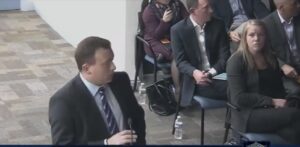
At the Oct. 30 City Council meeting, where the proposal had its first hearing, Luke Figora, Northwestern’s Vice President and Chief Operating Officer at Northwestern, told Council members that “the numbers get kind of tossed around in terms of 7,500 people (capacity at the smaller concerns), 60 days a year,” he said. “What we’re really trying to do with the text amendment, the ‘ask’ there is create the platform to do this kind of stuff in a programmed way that makes sense for the broader community.”
“Most of the focus is about the concerts,” he said. “And just as a reminder, right now we do generally between six to eight capacity events at Northwestern Ryan Field every year. It’s usually six to seven football games, and then one graduation. That’s kind of when we’re looking at big capacity events at Ryan Field. So something like 2% of the year that we’re using that facility in the way it could be used. When we’re talking about concerts, we’re asking about adding six days to that,” he noted. “So a total capacity event calendar for the year of something like 13 days.”
He pointed to a concert management plan that the university has attached to the MOU, including guidelines how the concerts will be managed to address concerns.
University officials will review them every year with the city to keep them updated over time,” he said, “as long as we’re doing these events in the city.”
Most of the other NU officials statements on the proposal had to do with how the changes would elevate the school’s athletic program, and the value of the benefits which “we expect to be an economic boon to the city of Evanston,” said Dave Davis, the school’s Executive Director of Neighborhood and Community Relations.
Officials didn’t address the 60 “smaller” concerts.
Developers citing public benefits in support of the city approving large scale projects is not new. Generally, developers will talk about the public tax dollars and jobs their projects will generate at the tail end of conditions which officials consider in planned development requests.
As recently as June of this year, Evanston City Council members rejected out of hand a developer’s bid to build a high-rise at 1621-31 Chicago Ave., siding with neighbors that the 15-story, 165-unit building was just too tall for that part of downtown.
Jonathan Amarilo, an attorney for the Horizon group, told city Planning & Development Committee members, that the project represented a $60 million investment. “It’s benefits are legion,” he said, “generating “significant tax revenues for the city, measured in the millions and millions of dollars over time, much of which will go to our public schools.”
Wrigleyville as an example
Writing on the Central Street Neighbors Association website, Jeff Smith, CSNA’s president, and a longtime observer of the city, noted the city Code only lists four principal standards for amendments to the zoning ordinance, namely, whether the proposed amendment (a) is consistent with the goals, objectives, and policies of the Comprehensive General Plan, (b) compatible with the overall character of existing development in the immediate vicinity, (c) will have an adverse effect on the value of adjacent properties, and (d) will not overwhelm public facilities and services.
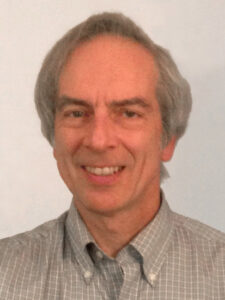
“CSNA identified nearly two dozen aspects in which the proposed rezoning and PD runs counter to what the City planning directs. This is a problem typical with proposals that spring not from the community or a planning process but from the unilateral desire of the project sponsor.”
To one of the criteria, enhancing the character of the neighborhood, Smith wrote, “this project will not enhance the existing character of the neighborhood, it will transform it. The closest analogy is Wrigley Field, where most of the modest-income residents of what was once part of Uptown were displaced by the surrounding neighborhood’s transformation into a party district following.”
“Although the ballpark was not the only factor, rents became unaffordable for longtime residents, and it is now often extremely difficult to impossible for a casualk visitor to park on neighborhood streets. Brick-and-mortar retail in Wrigleyville has been replaced in many instances with bars that thrive on nightlife and transient stadium attendees “pre-gaming” and after-game continuations.”
“The project will in some respects conflict or even compete with neighborhood business districts,” he said, answering another of the criteria. “The proposed stadium design suggests some permanent retail may be an intended use of the ground floor. Congestion already makes shopping at Central Street businesses more difficult on football and basketball games and large stadium event days,” he noted.
